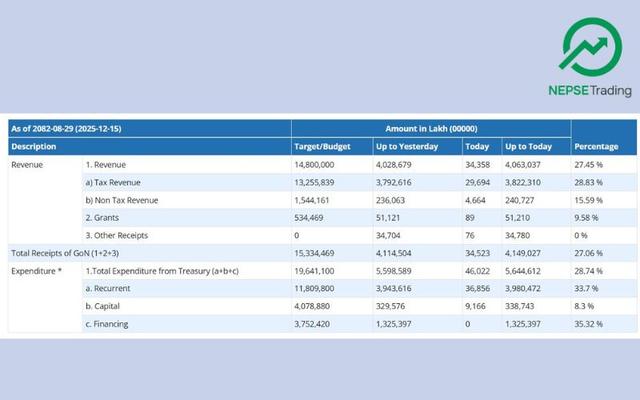Commercial Banks Display Robust Financial Performance as of Pus End, 2081 (Mid-Jan, 2025)
Author
Dipesh Ghimire

The latest financial indicators published for commercial banks as of Pus End, 2081 (Mid-January 2025) reveal a strong and stable banking sector in Nepal. The data showcases the effective management of deposits and credit, reflecting the sector's resilience amidst fluctuating economic conditions.
According to the report, the Total Deposit to GDP ratio stands at an impressive 105.02%, signifying that the total deposits held by commercial banks surpass the country’s Gross Domestic Product. This indicates a high level of trust in the banking system, with individuals and businesses actively saving and investing through formal financial institutions.
Similarly, the Total Credit to GDP ratio is recorded at 84.43%, highlighting the banking sector's crucial role in driving economic growth by channeling funds into productive sectors. This ratio reflects the strong credit penetration in the economy, supporting business expansion, infrastructure development, and consumer financing.
The Credit to Deposit (CD) Ratio is reported at 79.02%, a figure that indicates healthy credit disbursement without compromising liquidity. A CD ratio below 80% is generally considered safe, balancing profitability with risk management.
In terms of deposit composition, Fixed Deposits account for 51.53% of total deposits, reflecting a preference for stable, long-term savings. Saving Deposits make up 34.05%, while Current Deposits and Call Deposits stand at 6.15% and 7.52%, respectively. This mix suggests a balanced deposit structure that supports both liquidity and long-term funding for banks.
On the credit risk front, the Non-Performing Loan (NPL) ratio is at 4.73%, slightly higher than the ideal benchmark but manageable within the current regulatory framework. Additionally, the Loan Loss Provision (LLP) to Total Loan ratiois at 5.05%, indicating that banks have set aside adequate reserves to cover potential loan defaults.
Furthermore, the data reveals that Deprived Sector Lending accounts for 5.74% of total loans, aligning with regulatory mandates to promote financial inclusion and support underprivileged communities.
Overall, these indicators paint a picture of a resilient and well-regulated banking sector in Nepal. The strong deposit base, balanced credit growth, and prudent risk management strategies position commercial banks to navigate economic challenges while contributing to the country’s financial stability and growth.



